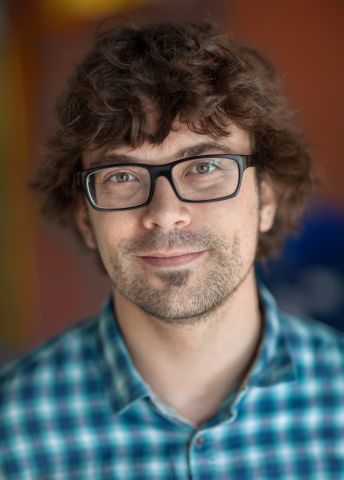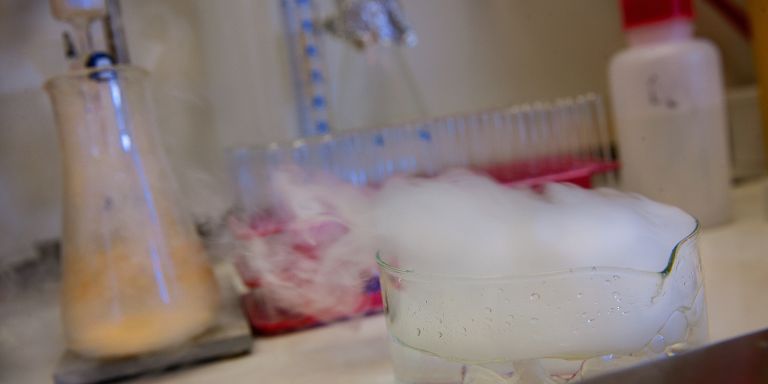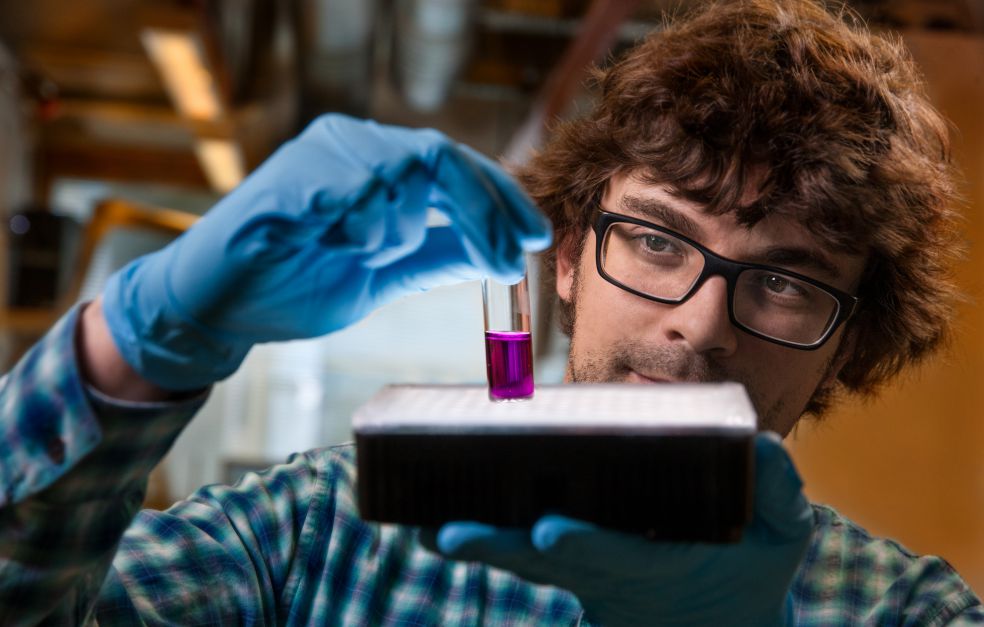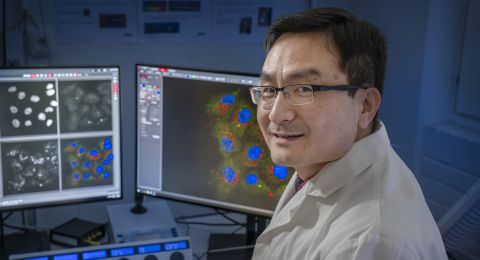Abraham Mendoza is designing the synthesis of organic molecules using the energy of conventional light. These new chemical transformations also involve fewer stages and use cheaper and more environmentally friendly chemicals than current methods. Improvements that may speed up the development of new drugs and materials.
Abraham Mendoza
PhD, Organic Chemistry
Wallenberg Academy Fellow, prolongation grant 2021
Institution:
Stockholm University
Research field:
More efficient and more environmentally friendly tools for chemical synthesis
A committed chemistry teacher in high school inspired Mendoza to become a chemist. He had intended to study computer science, but became fascinated by the world of chemical reactions.
“And I was so fortunate. The University of Oviedo, which is only about 20 kilometers from my home town Gijón in northern Spain, has one of the best chemistry departments in the country. Everything fell into place, and I got into organic chemistry and synthesis.”
In organic (carbon-based) chemistry, chemists learn to understand and use the ingenious building blocks and processes found in nature, and get inspiration from them to develop artificial reactions. Organic chemistry is a science that has made major contributions to societal development over the past hundred years, not least in the form of new drugs and materials. Mendoza explains:
“The speed at which we can produce the new drug candidates depends entirely on our capacity to synthesize molecules.”
Current synthesis methods often require toxic solvents and expensive metals to catalyze the chemical reactions. And many steps are needed in the process to produce the right molecule. With the help of funding from the Knut and Alice Wallenberg Foundation, Mendoza’s research team is developing more efficient methods, using light energy and less costly materials.
“We are using LEDs and common substrates – organometallics. These are readily available at most labs. We want to reduce the number of chemical steps needed to obtain the desired end product, which will also make the process more environmentally friendly.”
Art in a test tube
The organic chemistry, and the molecular creations designed by the chemists in their laboratory can be seen as a work of art. Mendoza elaborates:
“That’s what makes it so fascinating. We have a target molecule that we have found in nature. Then we take it to pieces in the right way so that others can quickly synthesize the molecule and its analogues. This kind of work is highly creative. We haven’t yet taught a computer to do it, although researchers are trying to automate the design process itself.”
During his years as a postdoctoral student at the Scripps Research Institute in the U.S. Mendoza was a member of Professor Phil Baran’s research team, studying synthesis of natural products with medicinal effects – anti-cancer drugs, to be precise.
“Phil Baran is a young researcher, but already one of the best in the field. I was inspired by his ideas about synthesis; his strategies were just mind-blowing.”
The ability to think in new ways is also one of Mendoza´s strong sides. Since 2013 he has been leading his own research team at Stockholm University’s Arrhenius Laboratory. Now he is focusing on automatic synthesis methods and organometallic photochemistry.
“Nothing I am doing now is anything I have done before – we are pioneers in this field.”
“This grant enables me to properly establish my research career in Sweden. We will be able to expand the lab, and can now recruit permanent researchers for our team.”
Revolutionary methods
In 2010 Heck, Negishi and Suzuki were awarded the Nobel Prize in Chemistry for palladium-catalyzed cross-couplings in organic synthesis. This is a tool that has fundamentally improved our ability to synthesize carbon-based molecules that are as complicated as nature’s own. Mendoza wants to make this important chemical reaction even more efficient.
“It’s a costly high-tech synthesis reaction – of central importance to the pharmaceuticals industry, for example. Our aim is to do the same thing without transition metals. We aim to use a conventional light bulb and a minute photosensitizer, which helps to start the catalytic reaction.”
The team is modeling the reactions in the lab to get closer to the solution.
“First we make a simple molecule – a test molecule. When we have found the solution for the reaction we want to develop, we examine whether it can be applied in different scenarios. We make gradually more complex molecules refining the conditions of the reaction.”
Good timing
The organic molecules that give metals the ability to catalyze synthesis reactions are called ligands, they are truly high-tech molecules. One result of Mendoza’s research has been a promising application for synthesis of a specific and costly class of ligands. Mendoza explains:
“My team has designed the key reaction that was needed for large-scale synthesis of ligands in a smoother process, and at a much lower production cost.”
How come no-one has done it before?
“The timing is right. Use of visible light in chemistry in general has gathered momentum in recent years. We have taken an old field of research and applied new technologies and ideas.”
Mendoza is elated over the new strides their research has made, which they will be publishing in due course.
“We believe we have created the first reaction that can seamlessly form carbon-carbon bonds in a way that can be easily performed by machines. This may be a solid start to teach machines to make molecules for us in the future.”
Text: Susanne Rosén
Translation: Maxwell Arding
Photo: Magnus Bergström






